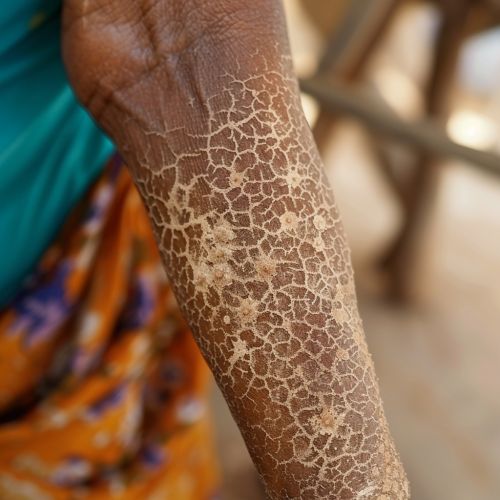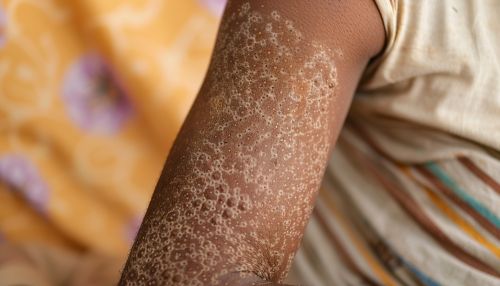Smallpox
Introduction
Smallpox is an infectious disease caused by two virus variants, Variola major and Variola minor. The disease was originally known as the "pox" and was a major cause of death worldwide, killing an estimated 300 million people in the 20th century alone. Smallpox is characterized by fever and a distinctive, progressive skin rash. Most survivors are left with scars, which are often severe.
History
The earliest evidence of smallpox is found on the teeth of a child buried in Neolithic burial sites in Denmark dating back to 3000 BC. Smallpox was a common disease in Eurasia in the 15th century, and was introduced to the Americas by European colonization. Smallpox was an endemic disease in many parts of the world throughout recorded history. The death rate from smallpox was high, and in many cultures, survivors were left with deep pitted scars (pockmarks) on their skin.


Causes
Smallpox is caused by infection with Variola virus, which belongs to the genus Orthopoxvirus, the family Poxviridae and subfamily Chordopoxvirinae. Variola virus is a large brick-shaped virus measuring approximately 302 to 350 nanometers by 244 to 270 nm, with a single linear double stranded DNA genome 186 kilobase pairs in size. The two forms of the virus, Variola major and Variola minor, are genetically distinct, with Variola major being the more deadly form.
Transmission
Smallpox spreads from person to person primarily through prolonged face-to-face contact with an infected person, usually within a distance of 1.8 meters (6 feet), but can also be spread through direct contact with infected bodily fluids or contaminated objects such as bedding or clothing. Rarely, smallpox has been spread by virus carried in the air in enclosed settings such as buildings, buses, and trains.
Symptoms
The first symptoms of smallpox include fever, malaise, head and body aches, and sometimes vomiting. A few days later, flat, red spots appear first on the face, hands, and forearms, and later on the trunk. Within a day or two, many of these lesions turn into small blisters filled with clear fluid, which then turns into pus. Scabs begin to form eight to nine days later and eventually fall off, leaving deep, pitted scars.
Diagnosis
Smallpox can be diagnosed by the patient's symptoms and by laboratory tests to identify the virus in blood, throat, or fluid from the lesions.
Prevention
The most successful method of prevention is vaccination. The smallpox vaccine uses a live virus related to smallpox that stimulates an immune response that protects the person against smallpox. The vaccine can be given before or after exposure to smallpox to prevent or lessen the severity of the disease.
Treatment
There is no specific treatment for smallpox disease, and the only prevention is vaccination. The historic smallpox vaccine, called vaccinia, was highly effective in preventing smallpox. If people were vaccinated within a few days of exposure, they could avoid or significantly lessen the severity of smallpox.
Eradication
The World Health Organization (WHO) launched an intensive global smallpox eradication campaign in 1967. In 1980, the WHO declared smallpox eradicated, making it the first disease to be eradicated by human effort.
